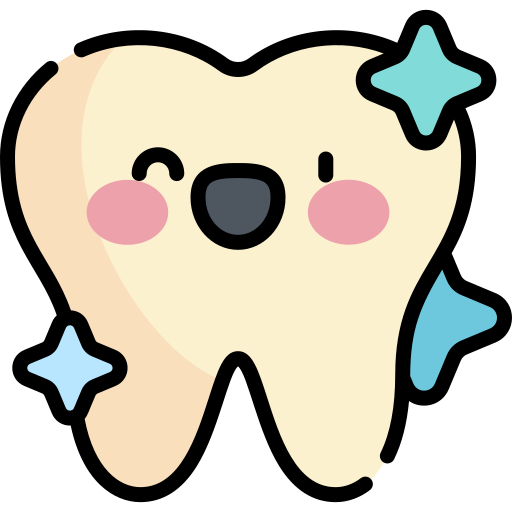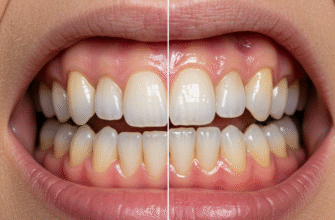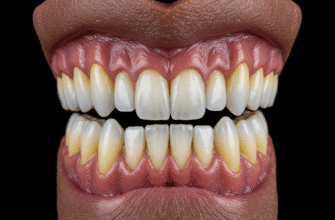The gleam of a healthy smile, the agony of a throbbing tooth – these are not uniquely modern concerns. Long before the advent of electric toothbrushes and fluoride treatments, ancient civilizations grappled with dental woes. Among them, the Greeks and Romans left behind a fascinating, if sometimes bewildering, written record of their understanding and management of oral health. These texts, penned by physicians, encyclopedists, and even poets, offer a window into a world where observation, empirical trial, and deeply ingrained beliefs intertwined in the pursuit of dental well-being.
Whispers from Ancient Greece: The Dawn of Dental Thought
While detailed dental treatises from the earliest periods of Greek history are scarce, the foundations for later medical thought, including dentistry, were laid here. The focus was often broader, situating oral health within the general framework of bodily harmony and the influence of the environment.
Hippocrates and the Humoral Theory
The name Hippocrates, synonymous with the ethical bedrock of medicine, echoes through the annals of dental history as well. The Hippocratic Corpus, a collection of medical texts from the 5th and 4th centuries BCE, though not singularly focused on teeth, contains numerous references to dental afflictions. These writings suggest that tooth decay, or caries, was recognized, often attributed to an imbalance of the body’s four humors – blood, phlegm, yellow bile, and black bile. Treatments were holistic, aiming to restore this balance. For instance, loose teeth might be seen as a symptom of a systemic issue rather than an isolated problem. The Corpus discusses issues like teething difficulties in infants, the painful condition of periodontitis (referred to as ‘paroulis’), and even fractures of the jaw. Extraction was a last resort, and Hippocrates himself is credited with designing rudimentary dental forceps. He advised caution, recognizing the dangers of infection and excessive bleeding.
One key observation attributed to Hippocratic thought was the connection between overall health and dental status. They noted that certain foods, particularly sweet and sticky ones, could be detrimental, though the precise mechanism was not understood as it is today. Mouthwashes, often made from wine or vinegar, were recommended for cleaning and soothing inflamed gums. The emphasis was often on managing symptoms and preventing further deterioration through diet and general hygiene.
Roman Refinements and Practical Applications
As the Roman Empire rose, it absorbed and built upon Greek medical knowledge. Roman practicality led to more detailed descriptions of dental procedures and the development of specific remedies. Roman writers provide a richer tapestry of dental practices, from sophisticated interventions to peculiar folk cures.
Aulus Cornelius Celsus: The Encyclopedist
Living in the 1st century CE, Aulus Cornelius Celsus was not a physician himself but an encyclopedist whose work, De Medicina, compiled the medical knowledge of his time. His writings are invaluable for understanding Roman dental practices. Celsus described various dental ailments with remarkable clarity, including toothache, dental abscesses, and gum diseases. He detailed methods for extracting teeth, advising that decayed teeth should first be filled with lint or lead to prevent them from shattering under the pressure of forceps. This suggests an early form of dental filling, though primarily to aid extraction rather than for long-term restoration.
Celsus also discussed methods for stabilizing loose teeth using gold or silk ligatures, a precursor to modern splinting techniques. He even touched upon rudimentary orthodontics, suggesting that an erupting permanent tooth out of alignment could be guided into place by consistent finger pressure. His approach was pragmatic, emphasizing careful diagnosis before intervention. For toothache, he recommended various remedies, including hot poultices, astringent mouthwashes, and even direct application of substances like peppercorn or ivy.
Ancient medical texts, particularly those by Celsus and Galen, reveal a surprisingly sophisticated understanding of dental issues for their time. They documented procedures like extractions, attempts at fillings, and even early orthodontic concepts. These writings underscore the long-standing human concern with oral health. Moreover, they highlight the empirical efforts made to alleviate dental suffering, forming a crucial part of medical history.
Scribonius Largus: Prescriptions for Oral Hygiene
A contemporary of Emperor Claudius in the 1st century CE, Scribonius Largus was a court physician whose work, Compositiones Medicamentorum, provides some of the earliest known recipes for toothpaste. This marks a significant step towards preventative dental care. One famous recipe involved a mixture of burnt stag’s horn, mastic, and sal ammoniac. Another suggested ingredients like powdered bones, eggshells, and myrrh, often mixed with honey to form a paste. These dentifrices aimed to clean teeth, freshen breath, and perhaps whiten teeth, reflecting a growing awareness of the importance of regular oral hygiene beyond simply treating acute pain.
Pliny the Elder: Nature’s Pharmacy and Folklore
Pliny the Elder, another 1st-century CE figure, was a Roman author and naturalist whose encyclopedic work, Naturalis Historia, is a treasure trove of information, including a vast collection of remedies for all sorts of ailments. When it came to dental problems, Pliny’s writings present a fascinating blend of empirical observation and deeply ingrained folklore. He listed numerous substances believed to cure toothache, ranging from the somewhat plausible (e.g., certain plant extracts) to the utterly bizarre. Remedies included ashes of a wolf’s head, rubbing the gums with a tooth from a freshly killed hyena, or using mouse dung. While many of these “cures” would be dismissed today as superstition, they highlight the desperation people felt in the face of dental pain and the diverse sources they turned to for relief. Pliny also mentioned the use of toothpicks, made from materials like mastic wood or bird quills, indicating a common practice for cleaning between teeth.
Galen of Pergamon: Synthesizing Knowledge
Galen (2nd century CE), a Greek physician practicing in Rome, became one of the most influential medical figures in Western history. His work synthesized and expanded upon earlier Greek and Roman medical knowledge. Galen theorized that teeth contained nerves, explaining the intense pain associated with tooth decay – a significant anatomical insight for his time. He believed decay was caused by an imbalance of humors within the tooth itself, or by the corrosive action of food residues. His treatments for toothache often involved opium for pain relief, a potent analgesic. He also described surgical interventions for dental problems, including drilling into a tooth to release pus from an abscess. Galen’s writings on anatomy, physiology, and therapeutics, including his dental observations, dominated medical thought for over a millennium.
Common Beliefs and Practices Across Eras
Beyond the writings of specific medical authorities, certain beliefs and practices concerning dental health were widespread in the Greco-Roman world.
The Myth of the Tooth Worm
One of the most persistent and widespread beliefs, spanning many ancient cultures including the Greeks and Romans, was that tooth decay and toothache were caused by tooth worms. These tiny worms were thought to burrow into the teeth, gnawing away at the structure and causing excruciating pain. Treatments often aimed at expelling these worms, using fumigation with henbane seeds (which produced smoke that could be imagined to carry worms out) or applying various concoctions. While entirely incorrect from a modern scientific perspective, the tooth worm theory provided a tangible, albeit imaginary, culprit for an often mysterious ailment.
Oral Hygiene: More Than an Afterthought
Despite some of the more outlandish remedies, there was a genuine concern for oral hygiene. As mentioned, toothpicks were common. Mouthwashes, often based on wine, vinegar, or herbal infusions like mint or chamomile, were used to freshen breath and soothe gums. The dentifrices described by Scribonius Largus, while abrasive by modern standards, show an active effort to clean the teeth. The Romans, particularly the upper classes, valued a clean mouth and pleasant breath, linking it to social acceptability and personal grooming.
Extractions and Early Prosthetics
Extraction remained a common, if feared, solution for severely decayed or painful teeth. Instruments like forceps (odontagra) were used, and physicians like Hippocrates and Celsus gave advice on how to perform extractions with minimal damage. There’s also some archaeological and literary evidence for early attempts at dental prosthetics. The Etruscans, who heavily influenced early Roman culture, were known for creating gold band appliances to stabilize loose teeth or hold artificial ones made from animal or human teeth. The Roman poet Martial mentions artificial teeth made of ivory or bone, suggesting that replacing lost teeth, at least for cosmetic purposes, was not unheard of, particularly among the wealthy.
The ancient Greek and Roman writings on dental health paint a vivid picture of early efforts to understand and combat oral diseases. From Hippocrates’ humoral theories to Celsus’s practical surgical advice and Scribonius Largus’s toothpaste recipes, we see a gradual evolution in thought and practice. While limited by their era’s scientific understanding – the tooth worm theory being a prime example – their observations, their emphasis on hygiene for some, and their attempts at restorative and even cosmetic procedures laid foundational stones for the development of dentistry. These ancient texts remind us that the quest for a healthy mouth and freedom from dental pain is a timeless human endeavor.








